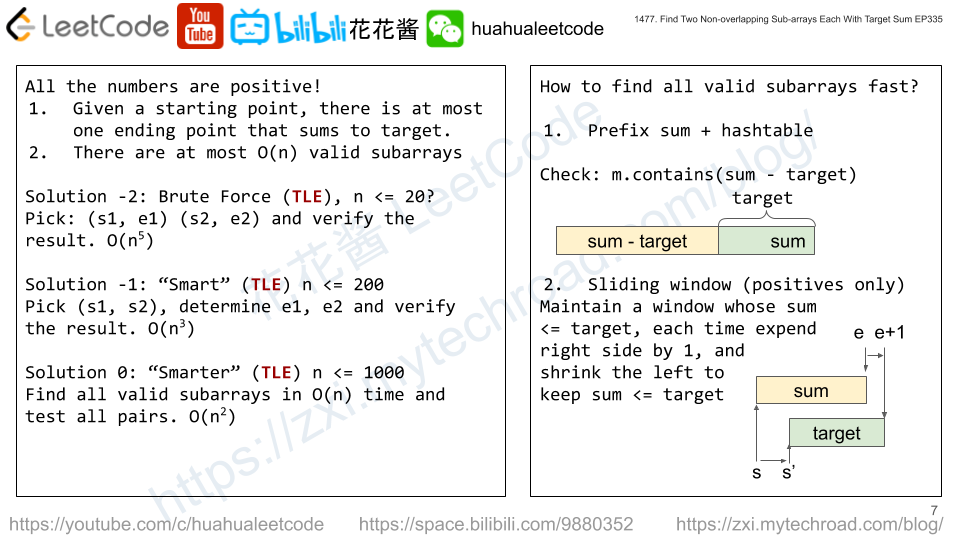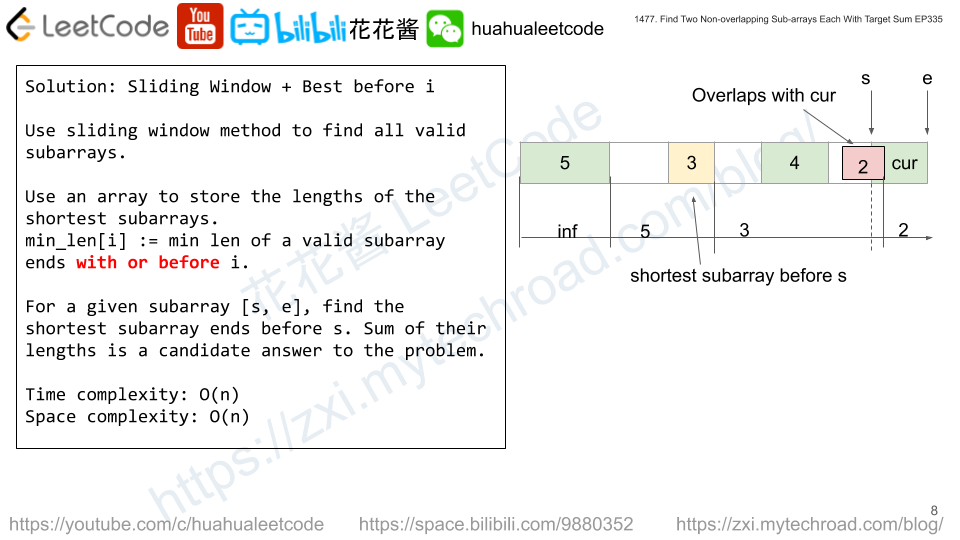Given an array of integers arr and an integer target.
You have to find two non-overlapping sub-arrays of arr each with sum equal target. There can be multiple answers so you have to find an answer where the sum of the lengths of the two sub-arrays is minimum.
Return the minimum sum of the lengths of the two required sub-arrays, or return -1 if you cannot find such two sub-arrays.
Example 1:
Input: arr = [3,2,2,4,3], target = 3 Output: 2 Explanation: Only two sub-arrays have sum = 3 ([3] and [3]). The sum of their lengths is 2.
Example 2:
Input: arr = [7,3,4,7], target = 7 Output: 2 Explanation: Although we have three non-overlapping sub-arrays of sum = 7 ([7], [3,4] and [7]), but we will choose the first and third sub-arrays as the sum of their lengths is 2.
Example 3:
Input: arr = [4,3,2,6,2,3,4], target = 6 Output: -1 Explanation: We have only one sub-array of sum = 6.
Example 4:
Input: arr = [5,5,4,4,5], target = 3 Output: -1 Explanation: We cannot find a sub-array of sum = 3.
Example 5:
Input: arr = [3,1,1,1,5,1,2,1], target = 3 Output: 3 Explanation: Note that sub-arrays [1,2] and [2,1] cannot be an answer because they overlap.
Constraints:
1 <= arr.length <= 10^51 <= arr[i] <= 10001 <= target <= 10^8
Solution: Sliding Window + Best so far


- Use a sliding window to maintain a subarray whose sum is <= target
- When the sum of the sliding window equals to target, we found a subarray [s, e]
- Update ans with it’s length + shortest subarray which ends before s.
- We can use an array to store the shortest subarray which ends before s.
Time complexity: O(n)
Space complexity: O(n)
C++
|
1 2 3 4 5 6 7 8 9 10 11 12 13 14 15 16 17 18 19 20 21 22 23 24 25 26 |
// Author: Huahua class Solution { public: int minSumOfLengths(vector<int>& arr, int target) { constexpr int kInf = 1e9; const int n = arr.size(); // min_lens[i] := min length of a valid subarray ends or before i. vector<int> min_lens(n, kInf); int ans = kInf; int sum = 0; int s = 0; int min_len = kInf; for (int e = 0; e < n; ++e) { sum += arr[e]; while (sum > target) sum -= arr[s++]; if (sum == target) { const int cur_len = e - s + 1; if (s > 0 && min_lens[s - 1] != kInf) ans = min(ans, cur_len + min_lens[s - 1]); min_len = min(min_len, cur_len); } min_lens[e] = min_len; } return ans >= kInf ? -1 : ans; } }; |
请尊重作者的劳动成果,转载请注明出处!花花保留对文章/视频的所有权利。
如果您喜欢这篇文章/视频,欢迎您捐赠花花。
If you like my articles / videos, donations are welcome.



Be First to Comment